gb_williams
Contributor
If youre thinking about diving Bocas del Toro, leave your expectations at home and get ready for a Panamanian treat.
Bocas is a town like no other; not in Panama, nor elsewhere. From the architecture to the weather, to the people, Bocas is different. When its the rainy season over most of Panama, its invariably drier in Bocas. And, when the hot, dry winds of summer blow over the rest of the country, (January through March), you can count on rainy days in these islands.
Along the half-mile of main street, the clapboard restaurants and hostels with their brightly colored gingerbread trim have more of the look and feel of a western movie set than a tropical Panamanian town. In a way, thats about right. In the early 1900s, Bocas Town was a frontier blazing banana port of the United Fruit Company, and all of its street names and most of the inhabitants were American. Along the shore that boarders the town on three sides, the office buildings, restaurants and hotels are perched on pilings over the water. Just about any restaurant is a great place to catch the evening breeze and an after-dive Cervesa Panama while watching the water taxis zip by as they go to and from the numerous islands of the archipelago.
For years, Bocas has attracted backpackers, surfers and snorkelers from all over the world; especially Europe. That part hasnt changed much since I first visited the town and the reefs ten years ago. What has changed are the number of ex-pat Americans and Canadians who have flocked there for retirement or adventure or both. And that has had both positive and negative impacts. Its been positive for the services the migration has brought about. There are more restaurants and hotels, things run a little smoother and the streets are now paved. Unfortunately, you can no longer be entertained for hours watching the taxi pick-ups bounce and jostle as they try to dodge the deep, water filled pot holes on main street. The other impact is price. While Bocas is a bargain compared to Grand Cayman, Roatan or Bonaire, gone are the days when a room for the night and a two-pound lobster dinner both cost $6.
Enough of the travel log heres about the diving:
This where you need to abandon all expectations. Starting with visibility. Granted, I havent dove yet during the truly great Bocas diving season of late August through the end of October, but I have dove in early August, May and January. At no time was visibility greater than 30 feet. The rains carry a lot of mud into the mainland rivers and that means a lot of sediment in the bay. In the afternoons, there are sometimes brief but fierce tropical rainstorms that pelt the surface and block the sunlight. They look and sound like a gravel truck unloading above you. And, when you get out of the water, youll be drenched, as if youre not soaked already.
But, its what you see within your range of visibility that is often spectacular. The varieties and the colors of coral and sponges are amazing. From red tubes to brown leafs to hues of blue, purple, gold and pink. Often entwined with yellow and blue Brittle Stars, the reef looks like a living Jackson Pollack painting only more vibrant.
And, thats just the stage dressing.
The actors and the characters are a cast of thousands; Green and Spotted Morays, beautiful and shy Spotted Drums, hovering Banded Puffers, territorial Damselfish, Toadfish, tiny, yellow sea horses, large Porcupine fish, Barracuda, schools of Spadefish and the ubiquitous French Grunts with their buddies the Yellow Tailed Snappers. There are plenty of other creatures, too, like crabs, Caribbean lobsters, huge conch and schools of Reef Squid. Pretty but unfortunate are the newly arrived Lionfish. The first one was spotted in May of 2009. In January 2010, I saw from one to four on every dive. Dive operator Jon Schneiderman and the editor of the local Bocas Breeze newspaper are spearheading a multi-pronged effort among fishermen, divemasters and Panamas environmental agency to help control and contain the voracious invaders.
Another advantage of Bocas is that you dont have to go deep to see everything. Which means you get to stay longer. (Although, when the mad seas calm during September and October, I have been told there are some very impressive wall dives in the 80 to 100 foot range with bigger fish, better visibility and interesting caverns and swim-throughs.) Of the ten dives I made in January, the deepest was 65 feet. The most colorful and active reefs and wrecks are between 15 and 45 feet.
I can honestly say that while Bocas may not have the vast number of dive sites and hundred foot visibility of the Caymans, it certainly vies at least equally for the sea life and the reefs. Not to mention the cost. Boat dives are cheaper here than anywhere else in Panama.
In 2000, there were two dive operations in Bocas; Starfleet (or if you read the name on their boats: Starfeet) and Bocas Water Sports. At that time, the only things I trusted about BWS were its T-shirts. Today, thanks to ex-pat Jon Schneiderman, his wife Stacy, and their staff of instructors and divemasters, Bocas Water Sports is becoming one of the best dive operators in Panama and the only one with a PADI Five Star rating. Of the five Panamanian dive operators I have dove with repeatedly, BWS is the best. The difference is service.
Jon brings years of experience as a live-aboard captain to BWS. In the two years since taking over BWS, he has made a number of big improvements. The rental gear is kept in very good condition. The boats actually have ladders now for getting out of the water. And, most of all, the staff are more attentive and focused on the customers experience than many other divemasters. While they may not hand you a fresh, cool orange wedge when you finish your dive, they are quick to help with your gear and check you carefully before letting you roll off the side of the dive boat. Thats not to say that Panamanian divemasters dont care, its just that this is Panama. And, most of Panama doesnt pamper customers in the ways that most gringos have grown to expect. Many of the local divemasters learned to dive with cast off gear a gringo wouldnt take into a kiddie pool. Theyre used to getting into a dive boat by pulling themselves up and over the gunwale. In this environment, Jon has brought a new level of customer service to Panamanian diving.
All of the divemasters are also PADI instructors. They all speak at least two languages fluently (English being one) and know a lot about the sea life. Like our divemaster, Leandro, who obviously enjoyed showing where all the secrets of the reefs were hiding and did an excellent job of guiding his group of four divers. Thats right. Jon has put a cap on the number of divers per divemaster. The maximum is four. Another big difference from the typical resort boats hauling 14 to 24 divers.
In between dives, you can take advantage of world class snorkeling. Many of the snorkeling reefs are in no more than four to six feet of crystal clear water. The coral is just as vibrant and the small fish and animals just as plentiful as the deeper reefs.
So, when you go to Bocas, expect the following: colors, creatures and critters (both underwater and above) that will amaze and surprise you; a relaxed, frontier, party-hardy kind of town filled with vagabonds, tourists, ex-pats, indios and very hospitable panameños; rustic, but affordable accommodations (yes, you can pay big bucks for luxury, too) and great, great food! Oh, I didnt mention the food in Bocas? Like the many fine restaurants on the waterfront or the wonderful Thai restaurant, Island Time, perched on the hilltop in the rainforest above Bastimientos or the most excellent bar at Hotel Angela? (Just stay far away from Rip Tide. You could grow old, die and your body turn to dust before your meal gets served.) Anyway the food in Bocas when it arrives, it's great.
Just one last point you need to be aware of: Its very possible you could never come back to wherever you came from. There are a number of ex-pats living in Bocas who came for two weeks and never left. May you be so lucky.
Bocas is a town like no other; not in Panama, nor elsewhere. From the architecture to the weather, to the people, Bocas is different. When its the rainy season over most of Panama, its invariably drier in Bocas. And, when the hot, dry winds of summer blow over the rest of the country, (January through March), you can count on rainy days in these islands.
Along the half-mile of main street, the clapboard restaurants and hostels with their brightly colored gingerbread trim have more of the look and feel of a western movie set than a tropical Panamanian town. In a way, thats about right. In the early 1900s, Bocas Town was a frontier blazing banana port of the United Fruit Company, and all of its street names and most of the inhabitants were American. Along the shore that boarders the town on three sides, the office buildings, restaurants and hotels are perched on pilings over the water. Just about any restaurant is a great place to catch the evening breeze and an after-dive Cervesa Panama while watching the water taxis zip by as they go to and from the numerous islands of the archipelago.
For years, Bocas has attracted backpackers, surfers and snorkelers from all over the world; especially Europe. That part hasnt changed much since I first visited the town and the reefs ten years ago. What has changed are the number of ex-pat Americans and Canadians who have flocked there for retirement or adventure or both. And that has had both positive and negative impacts. Its been positive for the services the migration has brought about. There are more restaurants and hotels, things run a little smoother and the streets are now paved. Unfortunately, you can no longer be entertained for hours watching the taxi pick-ups bounce and jostle as they try to dodge the deep, water filled pot holes on main street. The other impact is price. While Bocas is a bargain compared to Grand Cayman, Roatan or Bonaire, gone are the days when a room for the night and a two-pound lobster dinner both cost $6.
Enough of the travel log heres about the diving:
This where you need to abandon all expectations. Starting with visibility. Granted, I havent dove yet during the truly great Bocas diving season of late August through the end of October, but I have dove in early August, May and January. At no time was visibility greater than 30 feet. The rains carry a lot of mud into the mainland rivers and that means a lot of sediment in the bay. In the afternoons, there are sometimes brief but fierce tropical rainstorms that pelt the surface and block the sunlight. They look and sound like a gravel truck unloading above you. And, when you get out of the water, youll be drenched, as if youre not soaked already.
But, its what you see within your range of visibility that is often spectacular. The varieties and the colors of coral and sponges are amazing. From red tubes to brown leafs to hues of blue, purple, gold and pink. Often entwined with yellow and blue Brittle Stars, the reef looks like a living Jackson Pollack painting only more vibrant.
And, thats just the stage dressing.
The actors and the characters are a cast of thousands; Green and Spotted Morays, beautiful and shy Spotted Drums, hovering Banded Puffers, territorial Damselfish, Toadfish, tiny, yellow sea horses, large Porcupine fish, Barracuda, schools of Spadefish and the ubiquitous French Grunts with their buddies the Yellow Tailed Snappers. There are plenty of other creatures, too, like crabs, Caribbean lobsters, huge conch and schools of Reef Squid. Pretty but unfortunate are the newly arrived Lionfish. The first one was spotted in May of 2009. In January 2010, I saw from one to four on every dive. Dive operator Jon Schneiderman and the editor of the local Bocas Breeze newspaper are spearheading a multi-pronged effort among fishermen, divemasters and Panamas environmental agency to help control and contain the voracious invaders.
Another advantage of Bocas is that you dont have to go deep to see everything. Which means you get to stay longer. (Although, when the mad seas calm during September and October, I have been told there are some very impressive wall dives in the 80 to 100 foot range with bigger fish, better visibility and interesting caverns and swim-throughs.) Of the ten dives I made in January, the deepest was 65 feet. The most colorful and active reefs and wrecks are between 15 and 45 feet.
I can honestly say that while Bocas may not have the vast number of dive sites and hundred foot visibility of the Caymans, it certainly vies at least equally for the sea life and the reefs. Not to mention the cost. Boat dives are cheaper here than anywhere else in Panama.
In 2000, there were two dive operations in Bocas; Starfleet (or if you read the name on their boats: Starfeet) and Bocas Water Sports. At that time, the only things I trusted about BWS were its T-shirts. Today, thanks to ex-pat Jon Schneiderman, his wife Stacy, and their staff of instructors and divemasters, Bocas Water Sports is becoming one of the best dive operators in Panama and the only one with a PADI Five Star rating. Of the five Panamanian dive operators I have dove with repeatedly, BWS is the best. The difference is service.
Jon brings years of experience as a live-aboard captain to BWS. In the two years since taking over BWS, he has made a number of big improvements. The rental gear is kept in very good condition. The boats actually have ladders now for getting out of the water. And, most of all, the staff are more attentive and focused on the customers experience than many other divemasters. While they may not hand you a fresh, cool orange wedge when you finish your dive, they are quick to help with your gear and check you carefully before letting you roll off the side of the dive boat. Thats not to say that Panamanian divemasters dont care, its just that this is Panama. And, most of Panama doesnt pamper customers in the ways that most gringos have grown to expect. Many of the local divemasters learned to dive with cast off gear a gringo wouldnt take into a kiddie pool. Theyre used to getting into a dive boat by pulling themselves up and over the gunwale. In this environment, Jon has brought a new level of customer service to Panamanian diving.
All of the divemasters are also PADI instructors. They all speak at least two languages fluently (English being one) and know a lot about the sea life. Like our divemaster, Leandro, who obviously enjoyed showing where all the secrets of the reefs were hiding and did an excellent job of guiding his group of four divers. Thats right. Jon has put a cap on the number of divers per divemaster. The maximum is four. Another big difference from the typical resort boats hauling 14 to 24 divers.
In between dives, you can take advantage of world class snorkeling. Many of the snorkeling reefs are in no more than four to six feet of crystal clear water. The coral is just as vibrant and the small fish and animals just as plentiful as the deeper reefs.
So, when you go to Bocas, expect the following: colors, creatures and critters (both underwater and above) that will amaze and surprise you; a relaxed, frontier, party-hardy kind of town filled with vagabonds, tourists, ex-pats, indios and very hospitable panameños; rustic, but affordable accommodations (yes, you can pay big bucks for luxury, too) and great, great food! Oh, I didnt mention the food in Bocas? Like the many fine restaurants on the waterfront or the wonderful Thai restaurant, Island Time, perched on the hilltop in the rainforest above Bastimientos or the most excellent bar at Hotel Angela? (Just stay far away from Rip Tide. You could grow old, die and your body turn to dust before your meal gets served.) Anyway the food in Bocas when it arrives, it's great.
Just one last point you need to be aware of: Its very possible you could never come back to wherever you came from. There are a number of ex-pats living in Bocas who came for two weeks and never left. May you be so lucky.
Attachments
-
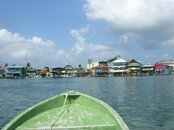 DSCN1148.jpg270.5 KB · Views: 112
DSCN1148.jpg270.5 KB · Views: 112 -
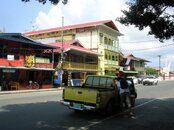 DSCN1110.jpg339.2 KB · Views: 117
DSCN1110.jpg339.2 KB · Views: 117 -
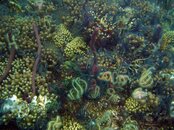 DSCN1170.jpg409.4 KB · Views: 117
DSCN1170.jpg409.4 KB · Views: 117 -
 DSCN1225.jpg398.1 KB · Views: 121
DSCN1225.jpg398.1 KB · Views: 121 -
 DSCN1297.jpg264.1 KB · Views: 105
DSCN1297.jpg264.1 KB · Views: 105 -
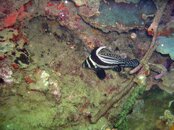 DSCN1220.jpg412.8 KB · Views: 106
DSCN1220.jpg412.8 KB · Views: 106 -
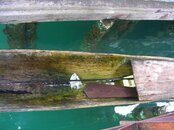 DSCN1292.jpg395.3 KB · Views: 97
DSCN1292.jpg395.3 KB · Views: 97 -
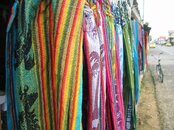 DSCN1245.jpg437.7 KB · Views: 106
DSCN1245.jpg437.7 KB · Views: 106 -
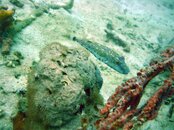 DSCN1189.jpg396 KB · Views: 114
DSCN1189.jpg396 KB · Views: 114 -
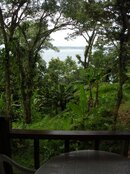 DSCN1280.jpg413.6 KB · Views: 106
DSCN1280.jpg413.6 KB · Views: 106



